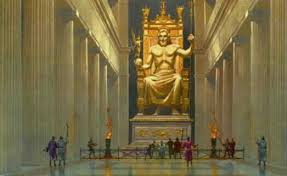This week we’re privileged to have Richard Walker, one of Europe’s foremost experts in the ancient art of gilding, at the school.
Over a two-week period, Richard will be teaching our students the finer points of oil-gilding, water-gilding and verre eglomisé, the art of gilding onto glass.
Richard has a studio based in the south of England, studied gilding at the University of Portsmouth and has been practicing and teaching gilding for nearly twenty years.
Under his guidance, students will be producing a range of samples in solid and distressed finishes, using copper, white gold and pure gold leaf. They’ll also learn how to use chemicals such as nitric acid to produce different effects and colours with a selection of different metals, such as verdigris on copper, metallic marbling and providing patina on silver.
Gilding is perhaps the woodworking skill with the longest history, dating back some 4,500 years to the Egyptians, who used gold leaf gilding to adorn tombs, coffins, sarcophagi and other objects, many of which survive today.
The ancient Greeks used a form of gilding for their Chryselephantine statues, which were built around a wooden frame, with carved pieces of ivory to represent flesh, and gold leaf the thickness of modern tin-foil to represent clothing, armour and other details – the most famous being the now destroyed Statue of Zeus at Olympia, one of the seven wonders of the ancient world. These days, gold leaf is beaten to an incredible 1/10,000th of an inch!

The Romans also used gold leaf to gild the ceilings of palaces and temples, a practice that then extended across Europe, especially during the Renaissance. These days gilding is used in many ways, from interior design to book binding.
The art of gilding is, however, in decline and both Richard and the Chippendale school are determined that it’s a skill our modern woodworkers learn both to develop their professional careers and to keep this remarkable skill alive.
We’ll have a look at what the students have produced next week.
The artist’s impression above is of what the Statue of Zeus may have looked like.
